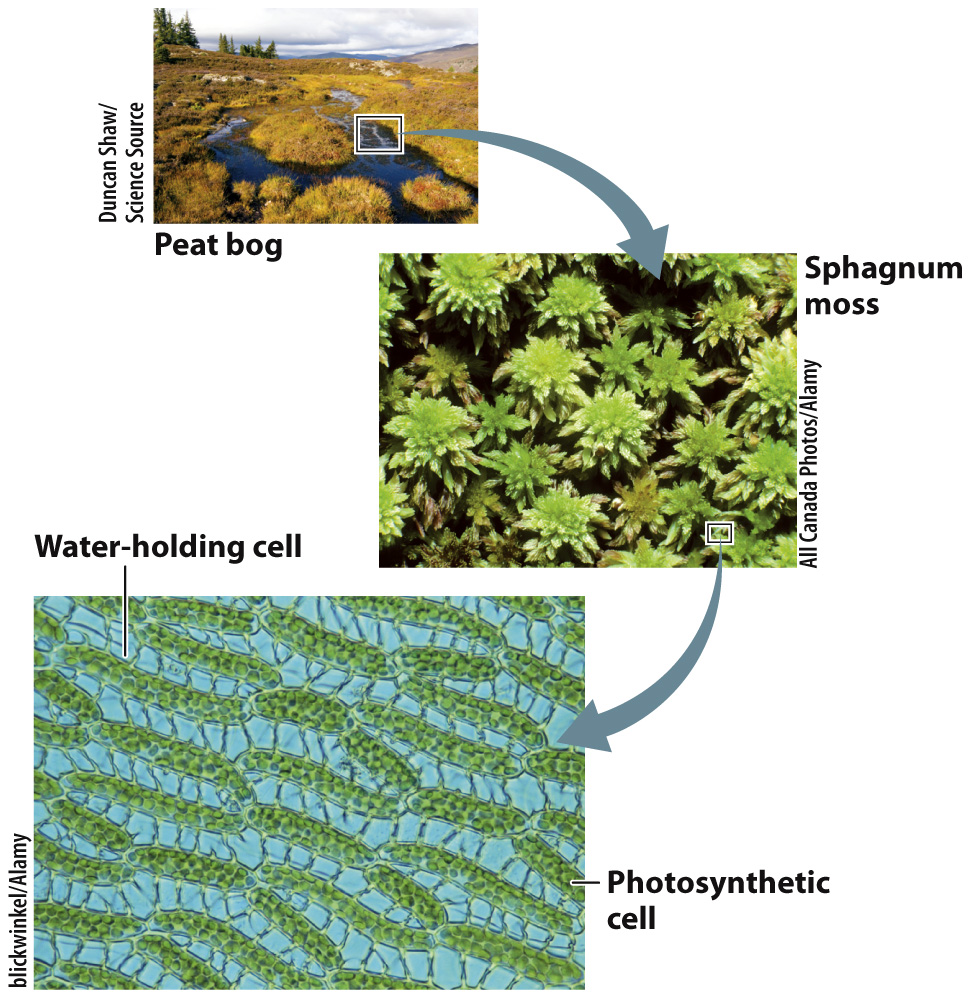Sphagnum moss plays an important role in the global carbon cycle.
693
In most ecosystems, bryophytes make only a small contribution to the total biomass. The one exception is peat bogs, wetlands in which dead organic matter accumulates rather than decomposes. A major component of peat bogs is sphagnum moss, any of the several hundred species of the genus Sphagnum. These mosses play a key role in creating wet and acidic conditions that slow rates of decomposition. They have specialized cells that hold onto water, much like a sponge, and they secrete protons that acidify the surrounding water (Fig. 33.5). Unlike many plants with roots, sphagnum moss thrives under wet, acidic conditions. In addition, sphagnum mosses produce phenols, organic compounds that slow decomposition under waterlogged conditions.

Peat bogs occupy only 2% to 3% of the total land surface, but they store large amounts of organic carbon—
What might cause an increase in the decomposition rate? Peat bogs are vulnerable to changes in the water table. As water levels fall, the peat becomes exposed to the air, allowing it to be broken down by microbes. Most peat bogs are located in northern latitudes, where the effects of climate change are predicted to be greatest. If rising summer temperatures result in higher rates of transpiration from surrounding forests, the result could be a lowering of the water table and a relatively rapid release of CO2 from this moss-